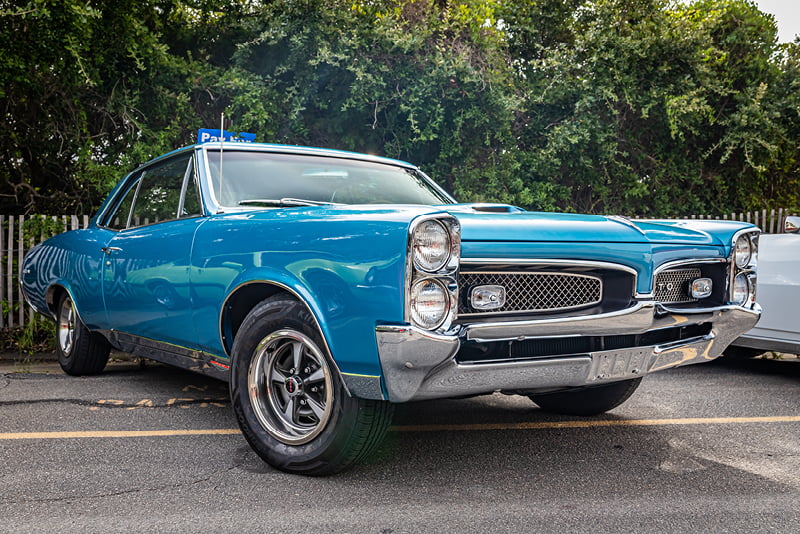Regarded internationally as the very first muscle car, it comes as no surprise that the Pontiac GTO has remained a favourite amongst car lovers and collectors.
Pontiac as we know it was born in its namesake in 1893 – Pontiac, Michigan. Originally branded as the Pontiac Buggy Company, founder Edward Murphy certainly knew which way the tide was turning, and began producing automobiles in 1907 under the name Oakland Motor Car Company. Oddly enough, the following year another former buggy company executive founded a motor vehicle company. That man was William Durant, and the company operation was the beginning of automotive giant, General Motors.
General Motors soon established itself as a holding company not to be trifled with, and had already amassed an array of vehicle manufacturers such as Buick, Oldsmobile and Cadillac. After Murphy’s sudden death in 1908, it didn’t take long for General Motors to place Pontiac in its sights, and acquired the company in full by 1909.
The Birth Of The Pontiac GTO
In 1935, Pontiac started adding chrome trim straight down the centre of its hoods and trunks. In turn, the distinctive embellishment became known as the “Silver Streak” and lasted as a trademark Pontiac “look” for twenty years. However, the brand had some difficulties finding its feet and niche in what was a very competitive marketplace.
Something was missing from the American marketplace. Influenced by the “hot rod” philosophy of bigger engines with lighter bodies, John Z. Delorean and his team at General Motors set out to build a car that would not only be launched to an entirely new market, but unintentionally started an automotive revolution.
By the early 1960s, Pontiac’s advertising and marketing approach was heavily based on performance. At the time, General Motors adhered to an internal policy that didn’t allow engines over 330 cubic inches in midsize cars – but that didn’t stop the Pontiac engineering team from building a few test models based on the new 1964 Tempest. The subterfuge was made easier by the fact that all Pontiac V8s had the same dimensions and fitment, regardless of their displacement.
Now stuffed with the larger 389 cubic inch V8 from Pontiac’s full size line, this same team were fully aware that they now had something truly special on their hands. General Motors eventually gave the green light to move this model into production, initially starting out as an option box on the standard Tempest as opposed to its own model.
This high performance and ground breaking automobile was the prototype for what we now know to be the Pontiac GTO, or America’s first muscle car. Partly driven by its performance, and partly because of a very effective marketing campaign, the Pontiac GTO quickly became a sales success, kickstarting the journey of one of America’s most iconic automobiles – the original muscle car.
Although the exact definition of a muscle car has long been debated by industry experts and automotive enthusiasts alike, muscle cars often have a combination of the following characteristics –
- A large V8 engine in the most powerful configuration offered for a particular model
- Rear-wheel drive
- Manufactured in the United States in the 1960s or early 1970s (the specific year range of 1964-1973 is often used)
- A relatively lightweight two-door body (opinions vary as to whether high-performance full size, compact and pony cars qualify as muscle cars, as some claim that only mid-size cars can qualify)
- An affordable price range, even as a collectors item
- Being designed for straight-line drag racing, while remaining street legal
Although it’s no secret that the Pontiac GTO was one of the first cars on the muscle car scene, it’s no secret that they simply own their place in history purely based on pop culture alone. From Forrest Gump to the Fast and The Furious franchise, many of our favourite films feature a Pontiac GTO muscle car not just as a prop, but arguably as a staple character in their own right.
The Pontiac GTO went on to stay in production from 1964 to 2006. Although this was not continuous, it’s the early models that have remained in the forefront of collector’s minds around the world, and has long been regarded as the dawn of a new automotive era.

